|
Books Should Be Free Loyal Books Free Public Domain Audiobooks & eBook Downloads |
|
|
Books Should Be Free Loyal Books Free Public Domain Audiobooks & eBook Downloads |
|
Fiction |
|---|
|
Book type:
Sort by:
View by:
|
By: Philip K. Dick (1928-1982) | |
|---|---|
 The Crystal Crypt & Beyond the Door
The Crystal Crypt & Beyond the Door
Two early science fiction stories by the wonderful craftsman, Philip K. Dick. In the Crystal Crypt, taken from the 1954 Planet Stories, the war between Mars and Terra is about to erupt and earth has only merchants and salesmen to fight; can they carry out their mission? Beyond the Door is a story that asks and answers the question: what lives beyond the door? And is it dangerous? | |
 The Defenders
The Defenders
The terrible destruction of total nuclear war between the Western and Eastern Blocks has succeeded in sterilizing the surface of the earth. No living creature can now exist there and all humans on both sides, have fled to the hives built miles below the surface where they constantly work to produce the war materials necessary to carry on the battle. For 8 years now, the actual fighting between these super powers has been conducted by robots known as Ledeys since only they can sustain the terrible levels of radiation caused by the constant bombardment... | |
 Beyond Lies the Wub & The Skull
Beyond Lies the Wub & The Skull
Two stories in the inimitable Philip Dick style. What is a Wub? A 400 pound slovenly, fat, ungainly, drooling animal that looks like a cross between a walrus and an enormous hog? Well, yes that is pretty much what he looks like and for 50 cents, a good bargain no matter how he tastes. The hungry spaceship crew expect to find out. Of course the Wub may not entirely agree but it doesn't have much to say about it. The second story, The Skull, is a skilful mesh of time travel, unscrupulous governments, prisoners, and religion. With an assassin thrown in for good measure. Enjoy! | |
 The Eyes Have It & Tony and the Beetles
The Eyes Have It & Tony and the Beetles
Aliens have invaded the earth! Horrible one celled creatures disguised as normal human beings ! Well, at least that is what it seems to the author. Yes, The Eyes Have It is a whimsical story, making gentle fun of certain writing styles, but only a topflight science-fictionist like Philip Dick , we thought, could have written this story, in just this way. Tony and the Beetles takes place far in the future when Earth's enormous colonial empire is well established but the question is, how long can it last? 10 year old Tony grows up fast when history catches up with the human race. A sobering look at human history .. and our probable future. Two very different stories but both entertaining. | |
By: Ivan S. Turgenev | |
|---|---|
 First Love
First Love
The title of the novella is almost an adequate summary in itself. The “boy-meets-girl-then-loses-her” story is universal but not, I think, banal – despite a surprise ending which notoriously turns out to be very little of a surprise. “First Love” is given its originality and poignancy by Turgenev’s mastery of the piercing turning-point (akin to Joyce’s “epiphanies”) that transforms the character’s whole being, making a tragic outcome inevitable. Even the nature symbolism is rescued from triteness by lovely poetic similes – e... | |
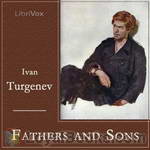 Fathers and Sons
Fathers and Sons
The fathers and children of the novel refers to the growing divide between the two generations of Russians, and the character Yevgeny Bazarov has been referred to as the “first Bolshevik”, for his nihilism and rejection of the old order. Turgenev wrote Fathers and Sons as a response to the growing cultural schism that he saw between liberals of the 1830s/1840s and the growing nihilist movement. Both the nihilists (the “sons”) and the 1830s liberals sought Western-based social change in Russia... | |
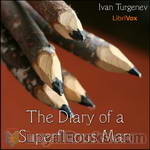 The Diary of a Superfluous Man
The Diary of a Superfluous Man
Turgenev’s shy hero, Tchulkaturin, is a representative example of a Russian archetype – the “superfluous man”, a sort of Hamlet not necessarily dignified with the title Prince: an individual of comfortable means leading a dreary existence, without purpose and led on by events which may, as in this story, engulf him. The novella takes the form of a diary started by Tchulkaturin in the shock of being diagnosed as having a terminal illness. The journal entries cover a period of two weeks, leading to his death... | |
By: H. G. Wells (1866-1946) | |
|---|---|
 The War in the Air
The War in the Air
War in the Air was written during a prolific time in H. G. Wells's writing career. Having withdrawn from British politics to spend more time on his own ideas, he published twelve books between 1901 and 1911, including this one. while many British citizens were surprised by the advent of World War I, Wells had already written prophetically about such a conflict. War in the Air predicted use of airplanes in modern war. | |
 In the Days of the Comet
In the Days of the Comet
William ("Willie") is a student living in the British town of Clayton. As a Socialist, he tries to move power from the upper class to the working class. Interestingly, in a fictitious confrontation Britain declares war on Germany. Willie falls in love with Nettie, but when she elopes with an upper-class man, Willie resolves to kill them both. Throughout the novel there is present in the sky a large comet which gives off a green glow. As Willie prepares to shoot the lovers, two battleships appear and begin shelling the coast, causing Willie to nearly lose his targets... | |
 The History of Mr. Polly
The History of Mr. Polly
A funny and touching account of the imaginative Mr. Polly who, bored and trapped in his conventional life, makes a U-turn--and changes everything.H.G. Wells’ early life as the son of a semi-insolvent shopkeeper and as a draper’s apprentice fueled his novels of the lower middle class: The Wheels of Chance (1896), Kipps (1905), and The History of Mr. Polly (1910). These works evoke the desperation of apprentices, clerks, and small traders in their monotonous toil behind shop counters. And, like Mr... | |
 Tono-Bungay
Tono-Bungay
Tono-Bungay is a realist semi-autobiographical novel. It is narrated by George Ponderevo, a science student who is drafted in to help with the promotion of Tono-Bungay, a harmful stimulant disguised as a miraculous cure-all, the creation of his uncle Edward. The quack remedy Tono-Bungay seems to have been based upon the patent medicines Carter's Little Liver Pills and Dr. Williams' Pink Pills for Pale People.... As the tonic prospers, George experiences a swift rise in social status, elevating him to riches and opportunities that he had never imagined, nor indeed desired... | |
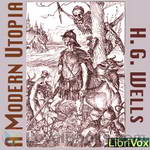 A Modern Utopia
A Modern Utopia
H. G. Wells's proposal for social reform was the formation of a world state, a concept that would increasingly preoccupy him throughout the remainder of his life. One of his most ambitious early attempts at portraying a world state was A Modern Utopia (1905). A Modern Utopia was intended as a hybrid between fiction and 'philosophical discussion'. Like most utopists, he has indicated a series of modifications which in his opinion would increase the aggregate of human happiness. Basically, Wells' idea of a perfect world would be if everyone were able to live a happy life... | |
 Sea Lady
Sea Lady
| |
 Passionate Friends
Passionate Friends
H. G. Wells is best known for his science fiction, but some of his greatest works were in other genres. The Passionate Friends is a love story. It also is a story about dreams, despair, jealousy, sex, the struggle against social convention, the future of civilization, and much much more. It is written by a father to his son, "not indeed to the child you are now, but to the man you are going to be." He writes it so that one day, perhaps when he is dead, his grown son can read it and rediscover him as a friend and equal... | |
By: Thomas Bulfinch (1796-1867) | |
|---|---|
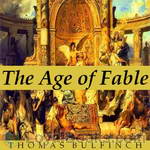 Bulfinch's Mythology: The Age of Fable
Bulfinch's Mythology: The Age of Fable
Bulfinch’s Mythology, first published in 1855, is one of the most popular collections of mythology of all time. It consists of three volumes: The Age of Fable, The Age of Chivalry, and Legends of Charlemagne. This is a recording of the tenth edition of the first volume, The Age of Fable. It contains many Greek and Roman myths, including simplified versions of The Iliad and The Odyssey, as well as a selection of Norse and “eastern” myths. Thomas Bulfinch’s goal was to make the ancient myths accessible to a wide audience, and so it is suitable for children. | |
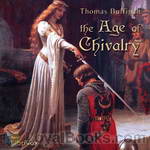 The Age of Chivalry, or Legends of King Arthur
The Age of Chivalry, or Legends of King Arthur
Thomas Bulfinch (July 15, 1796 – May 27, 1867) explains the his work is “an attempt tell the stories of mythology in such a manner as to make them a source of amusement. We have endeavored to tell them correctly, according to the ancient authorities, so that when the reader finds them referred to he may not be at a loss to recognize the reference. Thus we hope to teach mythology not as a study, but as a relaxation from study; to give our work the charm of a story-book, yet by means of it to impart a knowledge of an important branch of education... | |
 The Legends of Charlemagne
The Legends of Charlemagne
Bulfinch (July 15, 1796 - May 27, 1867) explains the his work is "an attempt tell the stories of mythology in such a manner as to make them a source of amusement. We have endeavored to tell them correctly, according to the ancient authorities, so that when the reader finds them referred to he may not be at a loss to recognize the reference. Thus we hope to teach mythology not as a study, but as a relaxation from study; to give our work the charm of a story-book, yet by means of it to impart a knowledge of an important branch of education... | |
By: Sax Rohmer (1883-1959) | |
|---|---|
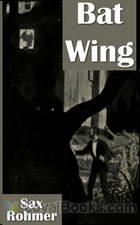 Bat Wing
Bat Wing
Private detective Paul Harley investigates a mysterious case involving voodoo, vampirism, and macabre murder in the heart of London. The first book in the Paul Harley series, written by Sax Rohmer, author of The Insidious Dr. Fu Manchu. | |
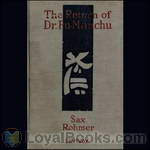 The Return of Dr. Fu-Manchu
The Return of Dr. Fu-Manchu
Burmese Commisioner Nayland Smith and his faithful friend Dr Petrie continue their fight against the evil genius of Dr Fu-Manchu when they seek to save the good doctor’s lost love and protect the British Empire from disaster when their malignant enemy returns to England. | |
 The Hand of Fu-Manchu
The Hand of Fu-Manchu
Further adventures of Nayland Smith and Doctor Petrie as they continue their battles against the evil genius, Dr Fu-Manchu. | |
 The Insidious Dr. Fu-Manchu
The Insidious Dr. Fu-Manchu
The first of the Fu-Manchu novels this story follows the two characters who are set against the machinations of the insidious doctor. | |
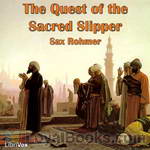 The Quest of the Sacred Slipper
The Quest of the Sacred Slipper
Cavanagh becomes involved in the adventurous search for a precious relic in the mysterious East. (Introduction by Laineyben) | |
By: Émile Zola (1840-1902) | |
|---|---|
 L'Assommoir
L'Assommoir
Émile François Zola (French pronunciation: [emil zɔˈla]) (2 April 1840 – 29 September 1902) was an influential French writer, the most important exemplar of the literary school of naturalism. More than half of Zola’s novels were part of a set of twenty novels about a family under the Second Empire collectively known as Les Rougon-Macquart. L’Assommoir (1877) is the seventh novel in the series. Usually considered one of Zola’s masterpieces, the novel—a harsh and uncompromising study of alcoholism and poverty in the working-class districts of Paris—was a huge commercial success and established Zola’s fame and reputation throughout France and the world. | |
 Therese Raquin
Therese Raquin
An unsatisfied wife kills her weak husband in order to carry on a sordid affair with another man. However, her selfish plans are spoiled when her husband continues to haunt her. This is often said to be Zola's first great novel. | |
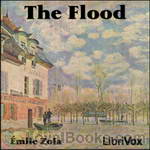 The Flood, trans. by an unknown translator
The Flood, trans. by an unknown translator
A well-to-do French farm family is destroyed by a flood. The story, thrilling to the very end, is told from the point of view of the family’s 70-year-old patriarch. The story speaks of the helplessness of mankind in the face of the forces of nature. | |
By: Aphra Behn (1640-1689) | |
|---|---|
 Oroonoko, or The Royal Slave
Oroonoko, or The Royal Slave
Aphra Behn was the first woman writer in England to make a living by her pen, and her novel Oroonoko was the first work published in English to express sympathy for African slaves. Perhaps based partly on Behn’s own experiences living in Surinam, the novel tells the tragic story of a noble slave, Oroonoko, and his love Imoinda. The work was an instant success and was adapted for the stage in 1695 (and more recently by the Royal Shakespeare Company in 1999). Behn’s work paved the way for women... | |
By: Philip Jose Farmer (b. 1918) | |
|---|---|
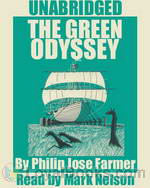 The Green Odyssey
The Green Odyssey
Alan Green is a space traveler stranded on a barbaric planet who has been taken slave and made a consort to an insipid and smelly queen. His slave-wife, though beautiful and smart, nags him constantly. He’s given up hope of ever returning to Earth when he hears of two astronauts who have been captured in a kingdom on the other side of the planet, and sets out on an action-packed journey on a ship sailing across vast grasslands on rolling pin-like wheels in a desperate scheme to save them and return home. Due to the non-renewal of its copyright, this book is in the public domain. | |
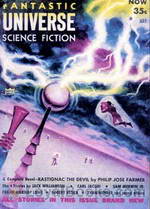 Rastignac The Devil
Rastignac The Devil
French colonists on a planet ruled by reptiles and amphibians are forced to wear living “skins” that subdue aggression and enforce vegetarianism. As children, Rastignac and his reptile friend Mapfarity force themselves to become carnivores and begin a protein fueled journey that causes Rastignac to develop a Philosophy of Violence. When a spaceship from Earth crashes in the ocean, Rastignac and company must put their philosophy to the test. - Rastignac The Devil was first published in the May 1954 issue of Fantastic Universe Magazine. | |
By: Frank Stockton (1834-1902) | |
|---|---|
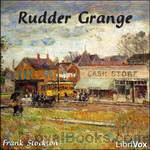 Rudder Grange
Rudder Grange
This book presents a number of short, comedic sketches of a country life in middle America in the late 1800s. The hilarious twists and turns endear our adorable, naive married couple to the reader; and the orphan servant Pomona – dear, odd, funny Pomona! – is the focus of several of the stories. Imagine a honeymoon in a lunatic asylum, and you’ve got Rudder Grange! | |
 Pomona's Travels
Pomona's Travels
Pomona and Jone of Rudder Grange fame travel to England and Scotland. Along the way, Pomona tangles with wild pigs, haymaking, hotels great and small, Pullman cars, comparison-makers, and a Duchess. She makes two matches and – in her usual, unorthodox way – stag hunts and attends a knighting. Pomona is as hilarious as ever, if a bit more rounded off on the edges. | |
By: Joseph Sheridan LeFanu (1814-1873) | |
|---|---|
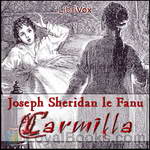 Carmilla
Carmilla
Published in 1872, Carmilla is an early work in the vampire literature genre and is incidentally one of the most influential of its type. The gothic novella accounts the tale of Laura, a young woman who becomes susceptible to the friendship and seductive charms of the mysterious Carmilla. A gripping tale of coincidence, mystery, compulsion, dark romance, and deception, Le Fanu’s classic is regarded as having paved the way for modern takes on vampires. Narrated by Laura, the novel opens with a recount of her childhood, as she depicts growing up in a beautiful, yet solitary castle encompassed by a forest in Styria, Austria... | |
By: Booth Tarkington | |
|---|---|
 Alice Adams
Alice Adams
A Pulitzer Prize-winning novel, Alice Adams chronicles the attempts of a lower middle class American midwestern family at the turn of the 20th century to climb the social ladder. The eponymous heroine is at the heart of the story, a young woman who wants a better place in society and a better life. As Gerard Previn Meyer has stated, “Apart from being the contribution to social history its author conceived it to be, [Alice Adams] is something more, that something being what has attracted to it so large a public: its portrait of a (despite her faults) ‘lovable girl’.” | |
 Seventeen
Seventeen
A Tale of Youth and Summer Time and the Baxter Family Especially William | |
 Gentle Julia
Gentle Julia
Penrod for girls in the form of Florence, the bratty younger cousin of luminous Julia Atwater, enlivens this romantic comedy set in Tarkington's Indiana of the early 20th Century. | |
 Penrod
Penrod
Join Penrod Schofield and his wistful dog Duke, in a hilarious romp through turn of the century Indianapolis, chronicling his life, loves, and mostly the trouble he gets into. | |
 Penrod and Sam
Penrod and Sam
Follow more of the hilarious life of the boy Penrod Schofield, his friends Sam Williams, Herman, Verman, Georgie, Maurice, and the love of his life, Marjorie Jones. | |
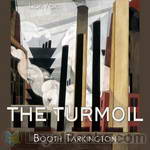 The Turmoil
The Turmoil
The Turmoil is the first novel in the ‘Growth’ trilogy, which also includes The Magnificent Ambersons (1918) and The Midlander (1923, retitled National Avenue in 1927). In 1942 Orson Welles directed a film version based on volume 2, also titled “The Magnificent Ambersons.” The trilogy traces the growth of the United States through the declining fortunes of three generations of the aristocratic Amberson family in a fictional Mid-Western town, between the end of the Civil War and the early part of the 20th century, a period of rapid industrialization and socio-economic change in America... | |
By: Gideon Wurdz (b. 1875) | |
|---|---|
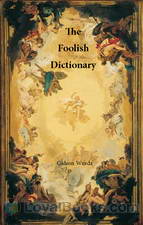 The Foolish Dictionary
The Foolish Dictionary
“The Foolish Dictionary” was written by “Gideon Wurdz” and was published in 1904. According to the beginning of the book, it is “An exhausting work of reference to un-certain English words, their origin, meaning, legitimate and illegitimate use…” This a a short but amusing dictionary which “redefines” words in some interesting ways. Funny and sometimes bizarre observations are sprinkled throughout. In keeping with the policy to read, rather than attempt to rewrite, books – even those with offensive content – nothing has been omitted... | |
By: William Shuler Harris (b. 1865) | |
|---|---|
 Life in a Thousand Worlds
Life in a Thousand Worlds
A jolly romp, which could be perhaps be described as Gulliver’s Travels Through Our Solar System and Beyond, as written by a great admirer of C. S. Lewis, on a rainy Sunday afternoon, after one too many mugs of cocoa. Includes some thought on alien philosophies and how to apply them to moral and social problems here on Planet Earth. | |
By: Heinrich Hoffmann (1809-1894) | |
|---|---|
 Struwwelpeter: Merry Tales and Funny Pictures
Struwwelpeter: Merry Tales and Funny Pictures
Struwwelpeter (Slovenly Peter) is an illustrated collection of humorous children’s poems describing ludicrous and usually violent punishments for naughty behavior. Hoffmann, a Frankfurt physician, wanted to buy a picture book for his son for Christmas in 1844. Not impressed by what the stores had to offer, he instead bought a notebook and wrote his own stories and pictures. While Struwwelpeter is somewhat notorious for its perceived brutal treatment of the erring children, it has been influential on many later children’s books, most notably Charlie and the Chocolate Factory. | |
 Slovenly Betsy
Slovenly Betsy
Hienrich Hoffmann was a German psychiatrist and doctor. He had written poetry and sketches for his son, and was persuaded to have a collection of these printed.The stories were not perceived as cruel or overly moral by Hoffmann's contemporaries.This American version contains a few of the stories from the original German "Struwwelpeter" publication. | |
By: Alphonse Daudet (1840-1897) | |
|---|---|
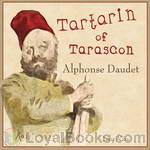 Tartarin of Tarascon
Tartarin of Tarascon
It tells the burlesque adventures of Tartarin, a local hero of Tarascon, a small town in southern France, whose invented adventures and reputation as a swashbuckler finally force him to travel to a very prosaic Algiers in search of lions. Instead of finding a romantic, mysterious Oriental fantasy land, he finds a sordid world suspended between Europe and the Middle East. And worst of all, there are no lions left. | |
By: George Bernard Shaw (1856-1950) | |
|---|---|
 Mrs. Warren's Profession
Mrs. Warren's Profession
The story centers on the relationship between Mrs Kitty Warren, a rich woman, described by the author as "on the whole, a genial and fairly presentable old blackguard of a woman" and her daughter, Vivie. Mrs Warren is a middle-aged woman whose Cambridge-educated daughter, Vivie, is horrified to discover the morally questionable way her mother acquired her fortune. | |
By: Katherine Mansfield (1888-1923) | |
|---|---|
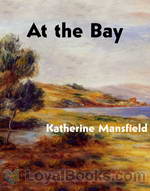 At The Bay
At The Bay
Katherine Mansfield was a prominent Modernist writer of short fiction, and one of New Zealand’s best-known authors. “At the Bay” is a story from her collection The Garden Party. | |
 Prelude
Prelude
One of the first books to be published by Leonard & Virginia Woolf's Hogarth Press, Prelude is among Katherine Mansfield's most accomplished stories, inspired by her childhood in New Zealand. (Introduction by iremonger) | |
By: Helen Hunt Jackson (1830-1885) | |
|---|---|
 Letters from a Cat
Letters from a Cat
Letters from a Cat: published by her mistress for the benefit of all cats and the amusement of little children is a collection of letters that a little girl receives from her pet while she is away from home. They tell of her pet’s adventures and misadventures. The book includes a preface which gives a little biography of the cat including its sad demise. H.H. was the alias of Helen Maria Hunt Jackson (1830 –1885) who is better known for her novel Ramona in which she dramatized the mistreatment of Native Americans and which formed part of her campaign for improved treatment of Native Americans by the U.S. Government. | |
By: Isabella Alden (1841-1930) | |
|---|---|
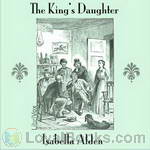 The King's Daughter
The King's Daughter
Dell Bronson has been reared in Boston by her refined uncle and aunt until, at age 18, she is called home by her father, a coarse tavern owner in Lewiston. As a daughter of the heavenly King, she strives to honor her heavenly Father by wooing her earthly father to Christ and away from rum. Set in the era of the temperance movement of the 1800’s. Authored by Isabella M. Alden under the pen name “Pansy.” Third in the Ester Ried series. | |
 Ester Ried
Ester Ried
Authored by Isabella M. Alden under the pen name “Pansy.” Ester Ried’s life is a dull monotony of toiling at her family’s boardinghouse. She’s overworked, jealous and cranky, a poor example of a Christian to her family and associates. She awakens to a new attitude and commitment due to an extended visit with her cousin. | |
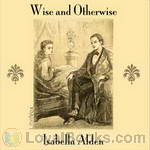 Wise and Otherwise
Wise and Otherwise
Immature Mr. Tresevant (from “The King’s Daughter”) comes to Newton with his spoiled wife to be the new pastor of the church attended by Dr. and Mrs. Douglass, Mr. and Mrs. Sayles, and Mr. and Mrs. Tyndall (from “Ester Ried” and “Julia Ried”), boarding with Jerome and Abbie Sayles. Authored by Isabella M. Alden under the pen name “Pansy.” Fourth in the Ester Ried series. | |
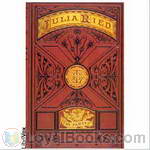 Julia Ried
Julia Ried
Authored by Isabella M. Alden under the pen name “Pansy.” Sequel to “Ester Ried.” Julia Ried must take a job as a bookkeeper in a factory to earn a living. The mistress of her boardinghouse influences her in a negative way, drawing her into a life and attitude displeasing to God. Will her family and friends be able to convince her stand up for what’s right? | |
 Four Girls at Chautauqua
Four Girls at Chautauqua
Authored by Isabella M. Alden under the pen name “Pansy.” First in the Chautauqua Girls series. Four friends – spoiled, quirky Ruth; fun-loving and mischievous Eurie; poor, independent and brainy Marion; and meek, approval-seeking Flossy – attend Chautauqua on a lark, and their lives are changed forever. (Chautauqua is an adult education movement in the United States, highly popular in the late 19th and early 20th centuries. The Chautauqua brought entertainment and culture for the whole community, with speakers, teachers, musicians, entertainers, preachers and specialists of the day.) | |
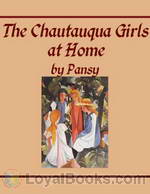 The Chautauqua Girls at Home
The Chautauqua Girls at Home
Sequel to Four Girls at Chautauqua. Ruth, Flossy, Eurie, and Ruth return home as new Christians, eager to begin working. Their new faith clashes with their old lives, which they must overcome, as well as the prejudices of friends and acquaintances. | |
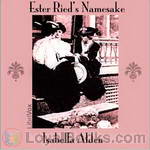 Ester Ried's Namesake
Ester Ried's Namesake
Ester Ried Randall tries to live up to her parents’ expectations and the name she’s been given, but her religion is a chore. Will she learn the lesson of faith that Ester did? Fifth and final book in the Ester Ried series. Authored by Isabella M. Alden under the pen name “Pansy.” | |
 Judge Burnham's Daughters
Judge Burnham's Daughters
Fifth in the Chautauqua Girls series. Ruth Erskine Burnham has helped raise her husband’s two daughters, but all have rejected her faith and values. The constant pressure to compromise has weakened her walk and made her life miserable. Her one comfort is her somewhat sickly 5 year old son. Will she return to the strong faith of her young womanhood, and will her family finally follow? | |
 Ruth Erskine's Crosses
Ruth Erskine's Crosses
Third book in the Chautauqua Girls series. Written by Isabella Alden under the pseudonym “Pansy.” Ruth’s father brings home a wife and daughter, after 18 years, that Ruth had never known about. Suddenly she is no longer the queen of her home. And what’s worse, the new mother and sister are rude and antagonistic. How will Ruth bear this cross? | |
By: Waldemar Bonsels (1880-1952) | |
|---|---|
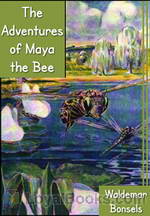 The Adventures of Maya the Bee
The Adventures of Maya the Bee
A little bee is born in a large and busy hive. At that time, the hive is going through a period of unrest and there are fears that it will become subdivided into separate colonies. The little new-born, Maya, is under the care of a strict but loving teacher. One day, driven by curiosity and rebellion, Maya escapes from the safe environs of the hive and flies into the forest. Here, she encounters all sorts of interesting, exciting, frightening and funny things. The Adventures of Maya the Bee is the story of the intriguing days that follow... | |
By: Guy de Maupassant (1850-1893) | |
|---|---|
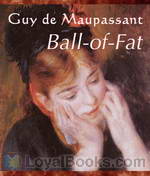 Ball-of-Fat
Ball-of-Fat
The first significant published short story of French author Guy de Maupassant, and generally acknowledged as his greatest work, “Ball-of-Fat” (French title: Boule de Suif) is the touching story of an interrupted coach ride from Rouen to Le Havre during which occurs the corruption of a principled prostitute by immoral and hypocritical members of the upper class. The story is set during the occupation of Rouen at the time of the Franco-Prussian War. | |
 Bel Ami, or The History of a Scoundrel
Bel Ami, or The History of a Scoundrel
“He had faith in his good fortune, in that power of attraction which he felt within him - a power so irresistible that all women yielded to it.”Though firmly set in 1880s Paris, Maupassant's gripping story of an amoral journalist on the make could, with only slight modifications of detail, be updated to the 1960s, to the Reagan-Thatcher years, or maybe to the present day. Anti-hero Georges Duroy is a down-at-heel ex-soldier of no particular talent. Good-looking but somewhat lacking in self-confidence, he discovers an ability to control and exploit women - whereupon his career in journalism takes off, fuelled by the corruption of colleagues and government arrivistes... | |
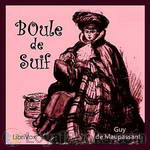 Boule de Suif
Boule de Suif
Boule de Suif (1880) is a short story by the late-19th century French writer Guy de Maupassant. It is arguably his most famous short story, and is the title story for his collection on the Franco-Prussian War, entitled "Boule de Suif et Autres Contes de la Guerre" ("Boule de Suif and Other Stories of the War"). John Ford said that his film Stagecoach was in many ways a western rewrite of Boule de Suif. | |
By: Joseph E. Badger, Jr (1848-1909) | |
|---|---|
 The Lost City
The Lost City
Bruno and Waldo Gillespie are orphaned brothers living with the extremely eccentric Professor Phaeton Featherwit. One day they set off in one of the professor’s machines to investigate a tornado at close range and accidentally get sucked into it! They are then transported by the tornado and find themselves in a barren, uncharted wasteland wherein lies a city– a long lost Aztec city! Find out what happens next to the brothers and the professor in this harrowing and exhilarating adventure! | |
By: William James (1842-1910) | |
|---|---|
 The Moral Equivalent of War
The Moral Equivalent of War
The Moral Equivalent of War, the last public utterance of William James, is significant as expressing the opinions of a practical psychologist on a question of growing popular interest. For the past fifteen years the movement for promoting international peace has been enlisting the support of organizations and individuals the world over. That this is a question on which much may be said for the opposition, James, though a pacificist, admits with his usual fair-mindedness, pointing out that militarism... | |
By: W. S. Gilbert (1836-1911) | |
|---|---|
 The Bab Ballads
The Bab Ballads
The Bab Ballads are a collection of light verse by W. S. Gilbert, illustrated with his own comic drawings. Gilbert wrote the Ballads before he became famous for his comic opera librettos with Arthur Sullivan. In writing the Bab Ballads, Gilbert developed his unique “topsy-turvy” style, where the humour was derived by setting up a ridiculous premise and working out its logical consequences, however absurd. The Ballads also reveal Gilbert’s cynical and satirical approach to humour. They became famous on their own, as well as being a source for plot elements, characters and songs that Gilbert would recycle in the Gilbert and Sullivan operas... | |
By: Keith Laumer (1925-1993) | |
|---|---|
 Gambler's World & The Yillian Way
Gambler's World & The Yillian Way
Here are two stores starring the always unconventional Terrestrial Diplomat, Retief. As a diplomat, Retief does not always follow procedure. Well the truth is that he almost never follows procedure but somehow his wit and strength manage to salvage most situations from the bumbling of his superiors. His sardonic approach to inter galactic negotiations in these two stories is a delight to hear. Despite everything, he manages to save the day and come out on top. | |
By: Fergus Hume (1859-1932) | |
|---|---|
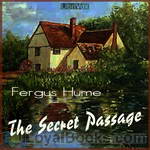 The Secret Passage
The Secret Passage
Excellent murder mystery. On September 9, 1905, the NY Times Saturday Review of Books described this book as follows: “That painstakingly ingenious person, Fergus Hume, has devised another of his hide-and-seek, jack-o’-lantern murder mysteries. It begins with a queer and rich old woman found stabbed to death in her chair and not a clue to the murderer. Then so many clues turn up that even the story-book detective is bewildered. Then nearly everybody turns out to be somebody else under an alias, and all the clues lead nowhere…” | |
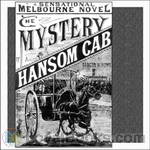 The Mystery of a Hansom Cab
The Mystery of a Hansom Cab
“The following report appeared in the Argus newspaper of Saturday, the 28th July, 18– “Truth is said to be stranger than fiction, and certainly the extraordinary murder which took place in Melbourne on Thursday night, or rather Friday morning, goes a long way towards verifying this saying. A crime has been committed by an unknown assassin, within a short distance of the principal streets of this great city, and is surrounded by an impenetrable mystery. … “On the twenty-seventh day of July, at the hour of twenty minutes to two o’clock in the morning, a hansom cab drove up to the police station in Grey Street, St... | |
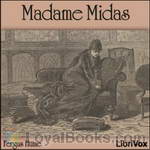 Madame Midas
Madame Midas
Madame Midas is a murder mystery, In the early days of Australia, when the gold fever was at its height. Fergus Hume was born in England, the second son of Dr James Hume. At the age of three his father emigrated with his family to Dunedin, New Zealand. He was admitted to the New Zealand bar in 1885. Shortly after graduation he left for Melbourne, Australia where he obtained a post as a barristers’ clerk. He began writing plays, but found it impossible to persuade the managers of the Melbourne theatres to accept or even read them... | |
 The Silent House
The Silent House
A mystery about a “locked door” murder committed in a house that has a reputation for being haunted. In the first half of the book, the murderer appears to be easy to figure out. The second half of the book, however, is filled with plot twists and mistaken identities and thus complicates the mystery much more. | |
 Bishop's Secret
Bishop's Secret
| |
By: P. G. Wodehouse (1881-1975) | |
|---|---|
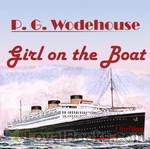 The Girl on the Boat
The Girl on the Boat
Also published as "Three Men and a Maid". The maid of the title is red-haired, dog-loving Wilhelmina "Billie" Bennet, and the three men are Bream Mortimer, a long-time friend and admirer of Billie, Eustace Hignett, a lily-livered poet who is engaged to Billie at the opening of the tale, and Sam Marlowe, Eustace's dashing cousin, who falls for Billie at first sight. All four find themselves on an ocean liner headed for England together, along with a capable young woman called Jane Hubbard who is smitten with Eustace, and typically Wodehousian romantic shenanigans ensue. (Introduction by wikipedia) | |
 Little Nugget
Little Nugget
Mrs Nesta Ford, in her London hotel room, reveals to her new friend Lord Mountry that she hopes to take her son Ogden on a yachting trip proposed by Mountry, despite her ex-husband having won custody of the boy. As Mountry leaves, Cynthia Drassilis arrives with Ogden, whom she has led away from his father's country house. Mrs Ford rewards Cynthia, but soon Mr Ford's secretary, a Mr Minnick, arrives to recover the stolen child. Cynthia tries to bribe his colleague, Mrs Sheridan, but to no avail, as she believes Nesta's influence has spoiled the boy... | |
By: Joseph Jacobs (1854-1916) | |
|---|---|
 Indian Fairy Tales
Indian Fairy Tales
This book is a fine collection of Indian fairy tales, some are folklore, some are from the Jataka tales, and some from panchatantra. | |
By: Frank Pinkerton | |
|---|---|
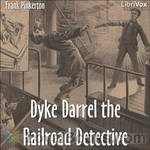 Dyke Darrel the Railroad Detective
Dyke Darrel the Railroad Detective
Dyke Darrel investigates an audacious train robbery that included the murder of a friend, and embarks on a man-hunt. High Victorian serial melodrama at its best! | |
By: Theodore Dreiser (1871-1945) | |
|---|---|
 Sister Carrie
Sister Carrie
Published in 1900, Sister Carrie follows its protagonist, Carrie, as she resolutely makes her way through the bustling city of Chicago in the hope of achieving her ultimate goal of a securing a better and more glamorous life for herself. Effectively illustrating his reputation as one of America’s greatest naturalists, Dreiser deviates from the established norms and moral values present in the Victorian era, and instead focuses his attention on accurately portraying the basic instincts that influence human behavior... | |
 The Financier
The Financier
In Philadelphia, Frank Cowperwood, whose father is a banker, makes his first money by buying cheap soaps on the market and selling it back with profit to a grocer. Later, he gets a job in Henry Waterman & Company, and leaves it for Tighe & Company. He also marries an affluent widow, in spite of his young age. Over the years, he starts embezzling municipal funds. In 1871, the Great Chicago Fire redounds to a stock market crash, prompting him to be bankrupt and exposed. Although he attempts to browbeat his way out of being sentenced to jail by intimidating Mr Stener, politicians from the Republican Party use their influence to use him as a scapegoat for their own corrupt practices... | |
 Jennie Gerhardt
Jennie Gerhardt
This is a story of an innocent, caring, beautiful young girl from and extremely poor family who throughout her life is drawn into affairs with two different men from a much higher social class. How members of her family, the family of one of the wealthy men, and society in general react to her situation is the basis of this story. | |
By: Zitkala-Sa (1876-1938) | |
|---|---|
 Old Indian Legends
Old Indian Legends
Fourteen Old Indian Legends by Native American ( Dakota ) Author Zitkala-Sa. These Legends feature the exploits of Iktomi the Native American Trickster god. | |
By: Robert Ervin Howard (1906-1936) | |
|---|---|
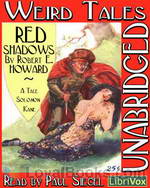 Red Shadows
Red Shadows
Red Shadows is the first of a series of stories featuring Howard’s puritan avenger, Solomon Kane. Kane tracks his prey over land and sea, enters the jungles of Africa, and even faces dark Gods and evil magic — all to avenge a woman he’d never met before. | |
By: Augusta Huiell Seaman (1879-1950) | |
|---|---|
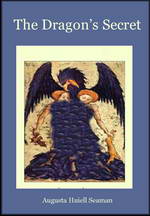 The Dragon's Secret
The Dragon's Secret
Sixteen year old Leslie Crane has come to the New Jersey shore as a companion to ailing Aunt Marcia, whose doctor has sent her there for a some quiet rest and recuperation. While the beach is lovely in October, Leslie quickly finds herself getting lonely with no one her own age to talk to. Little does she realize that she will not only soon make a new friend, but that they will both end up in the midst of a puzzling mystery centered around the closed up bungalow next door. Augusta Huiell Seaman is the author of over 40 historical fiction and mystery novels for older children most of which are currently out of print. The Dragon’s Secret was originally published in 1921. | |
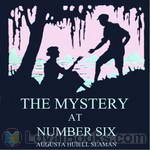 The Mystery at Number Six
The Mystery at Number Six
A mysterious girl, a mysterious pool, and a mysterious businessman combine to send two Florida teens to adventureland in this pre-Nancy Drew tale for young people | |
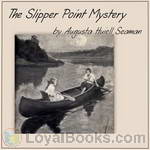 The Slipper Point Mystery
The Slipper Point Mystery
When fourteen year old Sally Carter decides to share the secret she has discovered on Slipper Point with her new friend Doris Craig, she couldn’t possibly imagine where the solution to this intriguing mystery will lead them! Augusta Huiell Seaman is the author of over 40 historical fiction and mystery novels for older children most of which are currently out of print. The Slipper Point Mystery was originally published in 1919. | |
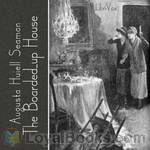 The Boarded Up House
The Boarded Up House
What is the secret of the old boarded up house? And what is the answer to the mystery of the long lost letter that is found in it? Best friends Joyce and Cynthia - along with their dog "Goliath", are determined to find out in this pre-Nancy Drew juvenile mystery for girls.Augusta Huiell Seaman was the author of over 40 historical fiction and mystery novels for older children. | |
By: Sir Stephen King-Hall | |
|---|---|
 Diary of a U-boat Commander
Diary of a U-boat Commander
The infamous U boats deployed by Germany in the two World Wars have spawned several works of fiction and non-fiction. These deadly vessels were not just efficient and lethal killing machines, but they were also used very effectively in economic blockades. They were positioned primarily to obstruct the conveyance of fuel, food and other essential supplies which the enemy needed to sustain the war effort. In the Diary of a U Boat Commander, the author, Stephen King-Hall draws upon his vast personal experiences as a naval officer in World War I... | |
By: Lucretia P. Hale (1820-1900) | |
|---|---|
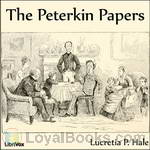 The Peterkin Papers
The Peterkin Papers
The Peterkin Papers is a book-length collection of humorous stories by Lucretia Peabody Hale, and is her best-known work. The Peterkins are a lovable but comically inept family with ingenuity, logic, resourcefulness, and energy—but not common sense. Many chapters show the family trying to solve some problem in a roundabout way, failing, and eventually being rescued by “the wise old lady from Philadelphia,” who cuts the Gordian knot with an effective but prosaic solution. The charm of the story is not in the plot, but in the telling, building up layers of complication, and the affectionate fun poked at the not-quite-cartoonish characters... | |
By: Robert Bridges | |
|---|---|
 Eros and Psyche
Eros and Psyche
Bridges’ Eros and Psyche retells the Eros (= Cupid) and Psyche myth first recorded by Lucius Apuleius in his book The Golden Ass. The poem is divided into twelve cantos – one for each of the twelve months of the year – which gives the poem a certain, almost “pastoral” feel. The number of stanzas in each canto equals the number of days in that month: so the first canto March has 31 stanzas, the second canto April has 30 stanzas, and so on. Each stanza is a septet (ie comprises exactly seven lines) which follow the same end-rhyming schema of a-b-a-b-c-c-b. | |
By: Yei Theodora Ozaki | |
|---|---|
 Japanese Fairy Tales
Japanese Fairy Tales
Many of us are familiar with Grimm's Fairy Tales, or children's stories from France, England, China, India and Germany, but are less aware of similar folk tales and children's stories from Japan. Japanese Fairy Tales by Yei Theodora Ozaki captures the exotic flavor, traditions and customs of this ancient land. Published in 1903 entitled the Japanese Fairy Book, the title was changed in the 1908 edition to Japanese Fairy Tales. Theodora Ozaki was the daughter of a wealthy Japanese aristocrat Baron Ozaki, the first Japanese man to study in the West, and his wife, an American schoolteacher's daughter... | |
By: M.L. Nesbitt | |
|---|---|
 Grammar-Land
Grammar-Land
In this charming 1877 book of grammar instruction for children, we are introduced to the nine parts of speech and learn about the rules that govern them in Grammar-Land."Judge Grammar is far mightier than any Fairy Queen, for he rules over real kings and queens down here in Matter-of-fact-land. Our kings and queens have all to obey Judge Grammar’s laws, or else they would talk what is called bad grammar; and then, even their own subjects would laugh at them, and would say: “Poor things!They are funny fellows, these nine Parts-of-Speech... | |
By: Laura Lee Hope | |
|---|---|
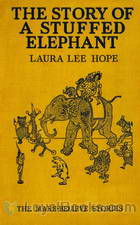 The Story of a Stuffed Elephant
The Story of a Stuffed Elephant
The Story of a Stuffed Elephant is… well, the story of a Stuffed Elephant and the little boy who owns him, and his sister, and all their adventures. A delightful children’s book by the author of The Bobbsey Twins series. | |
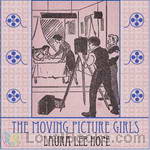 The Moving Picture Girls
The Moving Picture Girls
Ruth and Alice DeVere and their father Hosmer struggle to make ends meet in New York City – times are hard, even for a talented actor like Mr. DeVere. Just as he successfully auditions for a new play, an old voice affliction renders him terribly hoarse and he loses the role. Despite voice rest and medical treatment, Mr. DeVere’s voice fails to improve, and it is impossible to find theatre work. A friend and neighbour in their apartment building suggests that Mr. DeVere tries acting in the moving pictures (which being silent, would not need him to speak at all) but Mr... | |
By: Laura Lee Hope and Edward Stratemeyer (1862-1930) | |
|---|---|
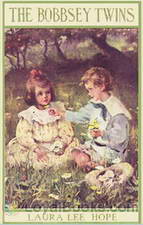 The Bobbsey Twins or Merry Days Indoors and Out
The Bobbsey Twins or Merry Days Indoors and Out
The Bobbsey Twins are the principal characters of what was, for many years, the Stratemeyer Syndicate's longest-running series of children's novels, penned under the pseudonym Laura Lee Hope. The first of 72 books was published in 1904, the last in 1979. The books related the adventures of the children of the middle-class Bobbsey family, which included two sets of fraternal twins: Bert and Nan, who were 12 years old, and Flossie and Freddie, who were six. | |
By: Laura Lee Hope | |
|---|---|
 The Bobbsey Twins at the Seashore
The Bobbsey Twins at the Seashore
In this third volume of the “Bobbsey Twin Series”, the twins – Nan and Bert and Freddie and Flossie – go with their family to visit relatives at the seashore. Excitement and adventure are sure to abound! | |
By: Laura Lee Hope and Lilian C. Garis (1873-1954) | |
|---|---|
 The Bobbsey Twins in the Country
The Bobbsey Twins in the Country
The second book in The Bobbsey Twins series finds the two sets of twins experiencing life in the country during the first part of their summer vacation from school. Their stay with their aunt, uncle and cousins on their farm in Meadow Brook is filled with new adventures for the 'city' Bobbseys. (Introduction by Lee Ann Howlett) | |
By: Laura Lee Hope | |
|---|---|
 Bunny Brown and His Sister Sue
Bunny Brown and His Sister Sue
This book follows the adventures of Bunny Brown, a 6-year old lively little boy, and his Sister Sue, a happy 5-year old little girl. You will enjoy learning of their adorable antics and delightful chatter. The Bunny Brown and His Sister Sue series were published by the Stratemeyer Syndicate from 1916-1930. (Introduction by Abigail Rasmussen) | |
 Bunny Brown and his Sister Sue at Christmas Tree Cove
Bunny Brown and his Sister Sue at Christmas Tree Cove
Bunny Brown and His Sister Sue were featured in a series of 20 books for young children published by the Stratemeyer Syndicate from 1916-1930. In this adventure, first published in 1920, Bunny and Sue lose a valuable possession belonging to their mother. They have many adventures and misadventures during a family boating vacation to Christmas Tree Cove. (Introduction by S. McGaughey) | |
 The Story of a Candy Rabbit
The Story of a Candy Rabbit
The Candy Rabbit wakes up one morning to find his Destiny has arrived: he is part of a wonderful Easter display at the toy shop in which he lives -- and any moment now the customers will arrive! Follow this sweet chap as he has many little adventures, making new friends and catching up with old friends along the way. | |
 Bobbsey Twins at Snow Lodge
Bobbsey Twins at Snow Lodge
The Bobbsey Twins are back at school after summer vacation, but Danny Rugg, the school bully, is up to mischief again--and this time he's trying to pin it onto Bert. Bert gets accused of freezing a giant snowball to the school steps, and all the evidence seems to point against him. Christmas is coming too, and the Bobbsey Twins are busy planning for their trip to Snow Lodge--where a lost treasure, a restored friendship, and exciting adventures await. | |
By: Mary Mapes Dodge (1831-1905) | |
|---|---|
 Hans Brinker
Hans Brinker
Mary Mapes Dodge created an instant bestseller with “Hans Brinker or The Silver Skates.” She wanted the book to be partly a book of travels and partly a domestic story. It is a tale written for children that adults also find interesting and uplifting. Dodge writes as if she is sending a series of letters from Holland to children in America, and her you-are-there perspective is aided by a nice attention to detail and vivid imagery.The Brinkers are a poor but stoic family under a dark cloud – Raff, the man of the house, fell from the dikes while reinforcing them during a bad storm, and for ten years he has been in a vegetative state... | |
By: Margery Williams (1881-1944) | |
|---|---|
 The Velveteen Rabbit
The Velveteen Rabbit
“What is REAL?” asked the Rabbit one day… Written in 1922, The Velveteen Rabbit, or, How Toys Become Real is the tale of a sweet unassuming toy rabbit who questions what it is to live and to love. It was the first children’s title written by Margery Williams (1881 – 1944), who had previously created only for adults. This story eclipsed all others, to become her most famous work, and an ever adored classic for all ages. | |
By: John Ruskin (1819-1900) | |
|---|---|
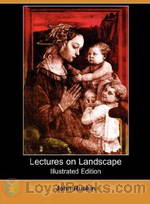 Lectures on Landscape
Lectures on Landscape
A series of lectures on landscape painting delivered at Oxford in 1871, by artist, critic, and social commentator, John Ruskin. | |
 The King of the Golden River
The King of the Golden River
When three brothers mortally offend Mr. Southwest Wind, Esquire, their farm is laid waste and their riches lost. Desperate for money, the brothers become goldsmiths and melt down their remaining treasures . . . only to find that the spirit of the King of the Golden River resides with a molded tankard, and knows the secret of the riches of the Golden River. (Introduction by Xenutia) | |
 The Seven Lamps of Architecture
The Seven Lamps of Architecture
The Seven Lamps of Architecture, published in May 1849, is an extended essay written by the English art critic and theorist John Ruskin. The 'lamps' of the title are Ruskin's principles of architecture, which he later enlarged upon in the three-volume The Stones of Venice. To an extent, they codified some of the contemporary thinking behind the Gothic Revival. At the time of its publication A.W.N. Pugin and others had already advanced the ideas of the Revival and it was well under way in practice... | |